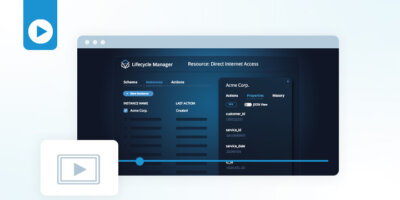How to Implement Stateful Orchestration with Itential’s Lifecycle Manager
Network and infrastructure services can be complex, requiring resources configured across several domains and specific data associated with the service (e.g. customer data or application-specific data). Lifecycle Manager allows teams to track all relevant data for these services and leverage it in orchestrated processes to provision and manage services — what’s known as stateful orchestration.
This demo shows how to use Lifecycle Manager and explores use cases where stateful orchestration can make an impact. Learn how to define Resource Models, build Actions, and manage service Instances, and see examples throughout.
In this Itential demo, you’ll learn:
- How and when to use Lifecycle Manager to manage services.
- How to define Resource Models within Lifecycle Manager.
- How to define & run Create, Update, & Delete Actions leveraging data tracked with a Resource Model.
- How to manage service Instances & run Actions on Instances.
